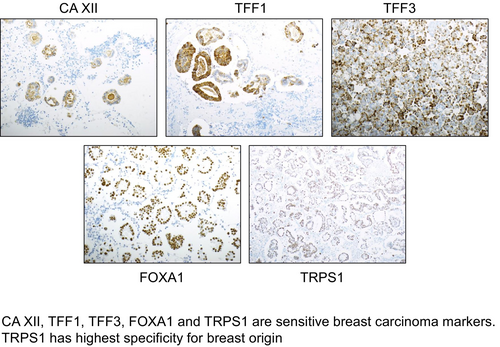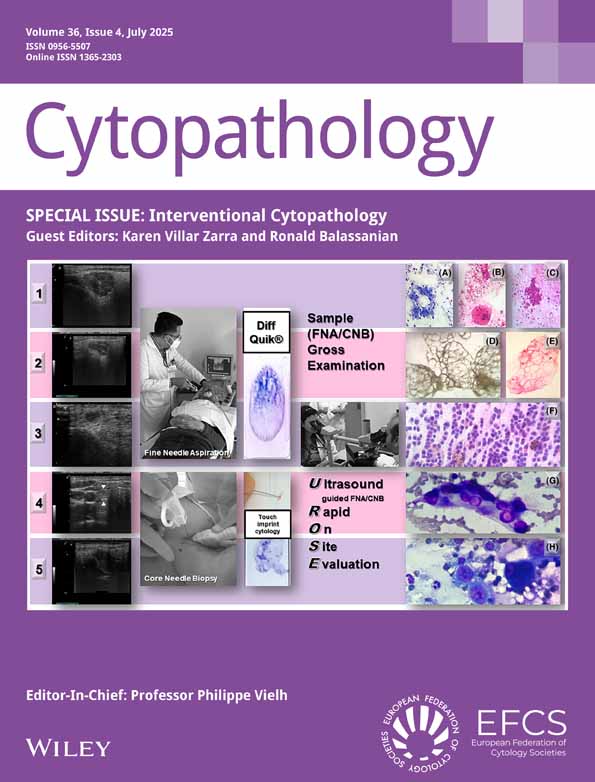The Diagnostic Role of TFF1, TFF3, FOXA1, CA XII and TRPS1 in Serous Effusions
Funding: The authors did not receive any specific funding for this study.
ABSTRACT
Objective
To analyse the diagnostic role of trefoil factor-1 and -3 (TFF1, TFF3), forkhead box protein A1 (FOXA1), carbonic anhydrase XII (CA XII) and trichorhinophalangeal syndrome type 1 (TRPS1) in serous effusions. The prognostic role of these markers in breast carcinoma was additionally studied.
Methods
Protein expression by immunohistochemistry was analysed in 247 effusions, consisting of 60 breast carcinomas, 54 tubo-ovarian carcinomas, 47 mesotheliomas, 44 lung carcinomas, 20 uterine corpus and cervical carcinomas, 17 gastrointestinal carcinomas and 5 cancers of other origin.
Results
TFF1, TFF3, FOXA1, CA XII and TRPS1 expression was found in 67%, 70%, 88%, 82% and 83% of breast carcinomas, respectively. Expression of all markers was seen in some carcinomas of other origin, most commonly in GI metastases, but was least frequent for TRPS1. CA XII expression was additionally seen in mesotheliomas and reactive mesothelial cells. All 5 markers were significantly overexpressed in breast compared to tubo-ovarian carcinoma (all p < 0.001) and lung carcinoma (all p < 0.001 except for FOXA1, p = 0.023). TFF1 (p = 0.003), TFF3 (p = 0.008) and FOXA1 (p = 0.017) expression was significantly higher in receptor-positive compared to receptor-negative primary breast carcinomas. In survival analysis for 44 breast carcinoma patients with clinical data, TFF1 expression was associated with a trend for longer overall (p = 0.096) and disease-free (p = 0.06) survival.
Conclusion
TFF1, TFF3, FOXA1, CA XII and TRPS1 are sensitive breast carcinoma markers, with FOXA1 performing best in terms of sensitivity and TRPS1 being the most specific. Whether the expression of these markers in breast carcinoma effusions is informative of survival merits further research.
Graphical Abstract
Conflicts of Interest
The authors declare no conflicts of interest.
Open Research
Data Availability Statement
The data that support the findings of this study are available on request from the corresponding author. The data are not publicly available due to privacy or ethical restrictions.





